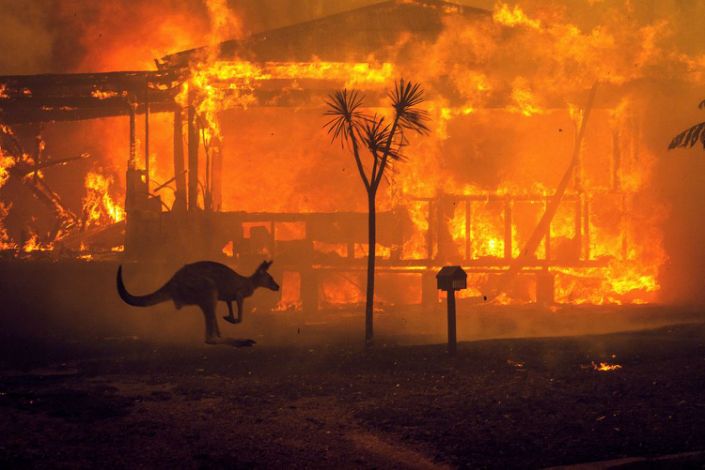This article was originally published in The Hill.
The fires raging in Australia present a sadly recognizable scenario, a new normal that, after two years of devastating wildfires in California, we in the United States have become all too familiar with. Policies intended to return forests to a more “natural” state with less proactive human management have created disastrous conditions that allow fires to burn hotter, longer and leave more destruction in their wake.
In Australia, the bushfires have burned at least 15.6 million acres and taken the lives of 24 people. Climate change, of course, has become the default explanation for why we have seen such dramatically destructive fires in recent years. Forest management practices, however, though often overlooked, may hold the key to preventing such destruction going forward.
In recent years, there has been intense opposition in Australia to prescribed burning by critics who fear it does little to prevent bushfires and has a negative impact on biodiversity. However, as bushfire research scientist Neil Burrows notes, “[Australia’s] been prescribed burning for 60 years and on analyzing the data we see a very strong trend between the prescribed burning we do and how much bushfire there is.” Simply put, “the more prescribed burning we do, the less bushfires we have.”
Controlled burns, once routinely used by farmers to reduce fuel around their properties, can now result in fines exceeding $500 per tree removed. Indeed, Liam Sheahan, a resident of Strath Creek in central Victoria, was fined $50,000 for clearing trees and shrubs around the perimeter of his home. He spent an additional $50,000 on legal fees defending his decision. After the Black Saturday bushfires devastated his community, Sheahan’s decision was vindicated as his home was the only one to remain standing.
Even the government’s land managers themselves are performing fewer controlled burns. According to Brian Williams, captain of Kurrajong Heights fire brigade, Australia has been burning less than 1 percent of its bushfire-prone land for the past 20 years. Similarly, the Queensland Fire and Emergency Services reported that out of 812 hazard-reduction burns that have been planned since 2016, only 439 have been completed.
While a lack of prescribed burning has largely undercut Australia’s ability to prevent wildfires, here in the United States, California’s main issue has been a lack of preventative forest management. After two years of catastrophic wildfire, forest managers have finally acknowledged that thinning forests, removing underbrush and administering controlled burns are essential to maintaining not only a healthy forest, but a landscape that is safe for humans. California and the federal government alike have faced challenges trying to manage forests on public lands and are starting to embrace private solutions.
One such private solution is the Forest Resilience Bond (FRB) developed by Blue Forest Conservation and the World Resources Institute. FRB is a financial tool used to raise private capital from investors to fund much-needed forest restoration work. Its pilot project is underway in California’s Tahoe National Forest, with private investors covering the upfront costs. These investors will be paid back over time by stakeholders who benefit from avoiding catastrophic wildfires, such as the Yuba Water Agency and the State of California.
A catastrophe of the scale we are witnessing in Australia should make the global community pause. Simply pointing the finger at climate change will not prevent devastation during the next wildfire season. We owe it to our public lands and our communities to reconsider our land-management policies and acknowledge that improved forest management is essential in maintaining healthy forests and creating a safe wildland-urban interface. The Forest Resilience Bond serves as an example of a market-based approach to keeping our forests healthy and our communities safe.




